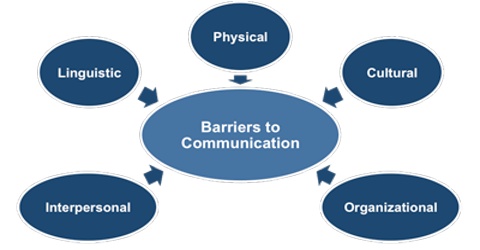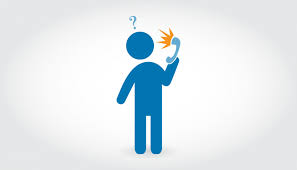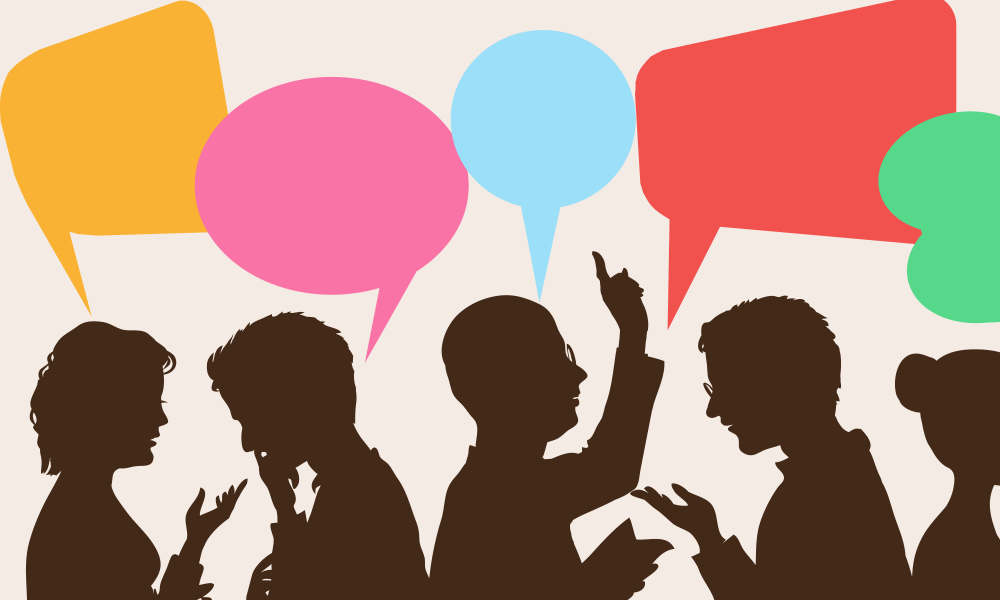Effective communication is an essential skill for any employee, manager, or leader. It’s also a fundamental prerequisite to success in the workplace, where clarity and accuracy of the information can mean the difference between winning and losing. But if you’re like most people, you probably have some issues with your communications skills. In this blog post, we’ll explore common problems and mistakes that people make when communicating and provide practical tips for avoiding them in the future.
Contents
- 1 What Are Problems Of Communication?
- 2 Communication Problems and Mistakes We All Make
- 3 Practical Tips For Good Communication Skills
- 4 Tips For Good Communication Skills For Employee/Manager/Leader
- 5 Preferred Modes of Communication
- 6 Marketing Communications – A Tool for Successful Communication
- 7 Conclusion
What Are Problems Of Communication?

Problems of communication are the barriers that interfere with clear communication between people. While at one time it may have been fine to communicate via telegraph, email, or phone – in today’s highly competitive global economy effective two-way face-to-face conversations are essential for success.
Types Of Problem Of Communication

There are various types of problems that can interfere with clear, effective communications. Commonly, there are three types of problems of communication:
Technical problems
This includes issues with technology, such as faulty equipment or bad connections.
Environmental problems
Noise, distractions, and other external factors can interfere with communications.
Human problems
These include misunderstandings, assumptions, biases, and emotions.
Causes Of Problems Of Communication

There are many causes of problems of communication. The most common ones are listed below:
Lack of knowledge or information
When one person doesn’t have all the facts, it can lead to misunderstandings and inaccurate assumptions.
Different backgrounds and cultures
People from different cultural backgrounds may interpret words and phrases differently, causing confusion and misunderstanding.
Gender differences
Studies have shown that men and women often communicate differently due to their different biology and socialization.
Defensiveness
When someone feels they are being attacked or criticized, they can become defensive and this can interfere with effective communication.
Communication Problems and Mistakes We All Make
There are many common mistakes – some of which we make almost every day without thinking about them. Let’s take a look:
Verbal Communication Mistakes

Improper Use Of I And You
Using ‘I’ and ‘you’. There’s a big difference between saying “I think this is the best solution” and “You should do this.” The first statement implies ownership, while the second one sounds like you’re passing on an order.
Not assertive enough
If we’re not clear about what we want, the other person is going to have a hard time giving it to us. It’s important to be assertive and make our needs known.
Relying too much on email or messaging apps
Email can be convenient but it lacks context. When you communicate via email, your recipient can’t see your facial expressions or other nonverbal cues that often help to clarify meaning and intent.
Assuming the other person has all the information they need
If someone sends an email or makes a statement without providing enough context and/or explanation, it’s unrealistic to expect their recipients to be able to understand and respond appropriately.
Over-simplifying and under-emphasizing important information
When we give someone a task or assignment, it’s easy to add too many qualifications and ‘ifs’ which can make the message confusing for the recipient. For example: “If you could send this report out today by email that would be great.”
Listening more than talking
Listening is an important part of communication, but listening too much can be problematic if it means that you’re not actively sharing information and ideas.
Speaking with poor tone or inflection
Tone refers to the emotional subtext in your voice (e.g., anger, excitement). Inflection refers to changes in your voice pitch (e.g., rising, falling). Both tone and inflection can be used to emphasize or clarify your words.
Using filler words such as ‘um’, ‘like’ and ‘you know’
These words can interrupt the flow of a conversation and make you sound unsure of yourself.
Using faulty logic to justify our words and actions
When we make mistakes in communication – such as forgetting an important detail when giving instructions-we often try to cover up our errors by providing additional information. For example: “I told you to pick up the laundry detergent, not the dishwasher soap.”
Use of emotional language
When we get emotional, it can interfere with our ability to communicate effectively. This is because we’re no longer thinking straight and we might say or do things that we later regret.
Using sarcasm
Some people can understand your sarcastic remarks even if they’re delivered with a straight face – but many others won’t get it or will feel offended because of the hidden insult.
Non-Verbal Communication Mistakes

Avoiding eye contact
Looking at someone directly when you’re speaking to them shows that you are interested in what they have to say and it can help your message feel more personal. If a person is avoiding eye contact, chances are they don’t find the conversation engaging or interesting.
Not smiling enough while communicating with others
Smiling is a universal sign of friendliness and it can make the person you’re talking to feel more at ease.
Fidgeting with objects or tapping your foot
This type of behavior can be seen as an indication that you’re impatient or bored with the conversation.
Crossing your arms over your chest
This defensive posture can send the message that you’re not interested in what the other person has to say.
Leaning away from the person you’re talking to
This posture can make it seem like you don’t want to be near the other person and it can create a feeling of distance between you.
Picking lint off your clothes or scratching your head
This type of behavior can be seen as a sign that you’re not paying attention to the person who’s speaking to you.
Use of gestures while communicating
Making too much or too few hand gestures. Hand gestures can help to emphasize your points and make your conversation more interesting – but use them sparingly, or else you might come across as being excessive or insincere.
Facing away from the person you’re talking to
This can make it difficult for the other person to read your body language and it can give the impression that you’re not interested in them or what they have to say.
Touching your face while speaking
Touching your face can be seen as a sign of nervousness or insecurity and it can make the person you’re talking to feel uncomfortable.
Picking at your nails or chewing on your pen
This type of behavior can be seen as a sign that you’re not interested in what’s being said or that you’re impatient with the conversation.
Communication Problems In The Workplace

Giving instructions that are difficult to understand
If someone can’t understand what we’re saying, it’s going to be difficult for them to follow our instructions. This can lead to frustration and a lot of wasted time.
Not being clear about expectations
If we don’t make our expectations clear from the start, there’s a good chance that the other person will misinterpret them – and this can lead to a lot of problems down the line.
Not listening to feedback
If we’re not open to hearing what the other person has to say, then we’re not going to be able to improve our communication skills.
Talking too much
When we talk too much, it gives the other person little chance to participate in the conversation. This means that they might end up feeling left out of things and it can also lead to misunderstandings later on down the line.
Communication Problems In Relationships

Assuming that we know what the other person is thinking
This can be a major source of problems in relationships because it often leads to misunderstandings.
Not listening
When we’re not listening, we’re not giving the other person our full attention and this can lead to a lot of hurt feelings.
- Especially in an argument, when we’re busy thinking about what we’re going to say next. Or how we’re going to respond, we’re not listening to the other person. This can lead to a lot of misunderstandings.
Interrupting
Interrupting someone can be seen as a sign of disrespect and it can also prevent them from getting their point across.
Judgmental remarks
Judgmental comments like “that’s a stupid idea” or “you’re wrong” don’t communicate any information – but rather, simply put the other person on the defensive right from the start.
Not asking for clarification
If we’re not sure about what the other person is saying, we should ask them to clarify. This will help to avoid any misunderstandings in the future.
Jumping to conclusions
Assumptions are never good because they’re just guesses – so it’s important not to assume anything when communicating with significant others. Otherwise, we might end up making a lot of wrong assumptions, thereby, creating avoidable issues.
Practical Tips For Good Communication Skills

Now that we know some of the common problems and mistakes that can occur during communication, let’s take a look at some practical tips for avoiding them:
General Tips
Be aware of your surroundings
This means not interrupting or judging and making sure you listen to what the other person is saying and ask clarifying questions if necessary. It also helps to go somewhere quiet where we won’t be distracted.
Speak clearly and concisely
No one likes having their time wasted so we must communicate clearly and concisely with the other person. This means no being vague, making assumptions, or jumping to conclusions – only speaking when we have something relevant to say.
Don’t be afraid of silence
Silence is a part of communication so it’s important not to feel awkward about it. Sometimes a pause can help us think more clearly about what we’re going to say next.
Use body language effectively
When communicating non-verbally, our posture and gestures must match what we’re saying – otherwise, the other person might get a different meaning from our message. For example, if someone says “yes” but shakes their head at the same time… you know they’re saying “no”.
Be a good listener
This means making eye contact, asking clarifying questions, and being open to feedback. This also helps us avoid jumping to conclusions or assumptions that might lead to confusion down the line.
Tips For Good Communication Skills For Employee/Manager/Leader
Handy Tips
As an employee, it’s important to be aware of the types of communication problems that can occur in the workplace. Here are a few tips for avoiding them.
As a manager, we must communicate effectively with our employees while avoiding common mistakes like jumping to conclusions or using emotional language.
As a leader, we must communicate effectively with our team and avoid common communication problems.
- Make sure everyone is on the same page. This means ensuring that everyone has all the information they need before making any decisions. This will help prevent confusion and chaos down the line.
General Tips
BE
Be aware of your tone
When we’re angry or upset, it often comes across in our tone of voice. So before we say anything, it’s important to take a deep breath and calm down. This will help us communicate more effectively.
Be open-minded
This means listening carefully and not making assumptions, as well as asking clarifying questions if necessary – instead of jumping to conclusions or assuming things. This will help avoid confusion down the line and lead to better communication overall.
Be a good listener
This means making eye contact, asking clarifying questions, and being open to feedback. This also helps us avoid jumping to conclusions or assumptions that might lead to confusion down the line.
AVOID

Avoid using emotional language
Using emotional language can often lead to misunderstandings and confusion. We must stay professional and avoid using words that might be seen as inflammatory.
Avoid using gossip
Gossiping can lead to misunderstandings and confusion. We must communicate directly with the other person if there are any problems or issues between us. This will help avoid issues down the line, as well as make sure everyone is on the same page about what happened.
Avoid assumptions
We need to be open-minded and listen carefully to what the other person is saying. This also helps us avoid jumping to conclusions, making assumptions, or assuming anything – which can lead to confusion down the line.
USE
Use body language effectively
When communicating non-verbally, our posture and gestures must match what we’re saying – otherwise, the other person might get a different meaning from our message. For example, if someone says “yes” but shakes their head at the same time… you know they’re saying “no”.
Use “I” statements
When we use “I” statements, it shows the other person that we’re taking ownership of our feelings. For example, instead of saying “you made me angry”, try saying “I feel angry when you do that”.
REMEMBER
Good communication is about more than just what we say – it’s also about how we communicate too: our tone, posture, and body language.
Preferred Modes of Communication

There are a few different modes of communication that can be more effective than others, depending on the situation. Here are a few examples. If…
You need to communicate information
Verbal communication, email, or memos are all good ways of communicating factual information. However, if you’re looking for feedback on the matter – it might be better to ask in person rather than sending them an email they might not read right away.
You want more detailed information
If you want more detailed information or feedback from your employees, it might be better to ask them in person. For example, if someone asks about the progress of a project – they’ll probably get a better answer face-to-face than through email.
You need help with something/have questions about how something works
If you’re having trouble with something, or have questions about how to do something – it might be better to ask the person in person. For example, if someone wants help using a new device…it’s probably best to go directly to them instead of emailing them and asking for assistance.
You want people’s attention/you need their full attention or time
If you want or need someone’s input and feedback, it might be better to ask them face-to-face. For example, if an employee wants a discussion about how they can improve…it might be best to go directly to the person instead of emailing them and asking for advice.
In Short
There is no one “right” way to communicate – the most important thing is that you are understood. However, it’s also important to make sure your communication method matches the situation. For example:
- Email is generally more formal than text or instant messaging.
- Instant messaging and texting can convey emotion more effectively than email (and often faster).
- Face-to-face conversations provide an opportunity for both parties to communicate non-verbally.
NOTE: It’s important to be mindful of these different modes and choose the appropriate one for each situation. This way, you can make sure your message gets across as clearly as possible.
Marketing Communications – A Tool for Successful Communication
Marketing communications is an important aspect of a business. The right tools can help you market your products or services to the masses, while also keeping tabs on how well they’re doing in terms of sales and marketing efforts.
Social media platforms are a good way of communicating with consumers, as it allows them to share their thoughts and feelings about your brand or product. Additionally, it also gives you a way to directly communicate with them – which can help resolve any issues they might have.
Email marketing is another great tool for businesses. It allows you to target a specific audience, and send them tailored messages that might interest them. You can also track how many people are opening your emails, how many people click on them, and which links they’re clicking to measure the success of each email.
Finally…
Marketing communications is an important aspect for businesses. Tools like social media platforms, email marketing software, and tracking programs can help you stay in touch with consumers while also keeping track of their thoughts about your product.
Conclusion
Effective communication is an essential skill for any employee, manager, or leader. It’s also a fundamental prerequisite to success in the workplace, where clarity and accuracy of the information can mean the difference between winning and losing. However, many people have issues with their communications skills – often because they are unaware that there are problems with their communications methods.
Remember, it’s about more than just what we say – it’s also about how we communicate. By being mindful of the way we talk to others and using the most effective mode of communication for each situation, we can make sure our message is communicated as clearly as possible. Last but not least, think before you speak.
If you are looking for affordable Online Counseling MantraCare can help: Book a trial therapy session


